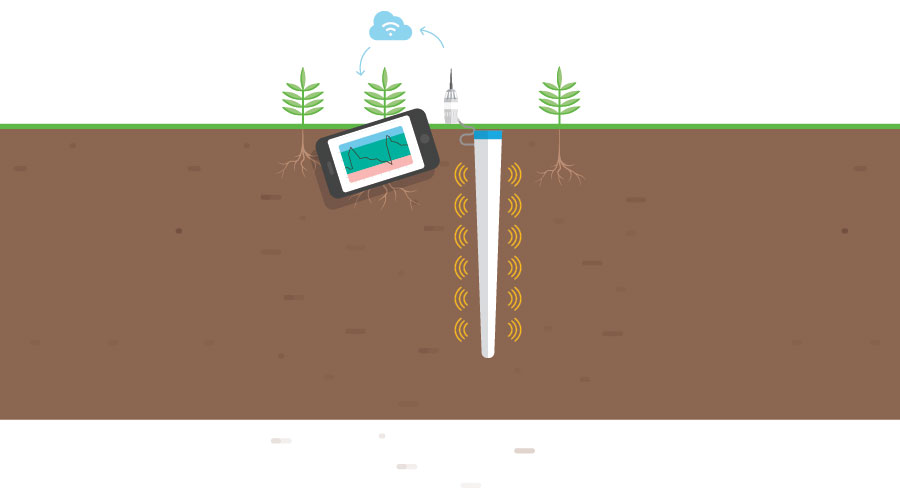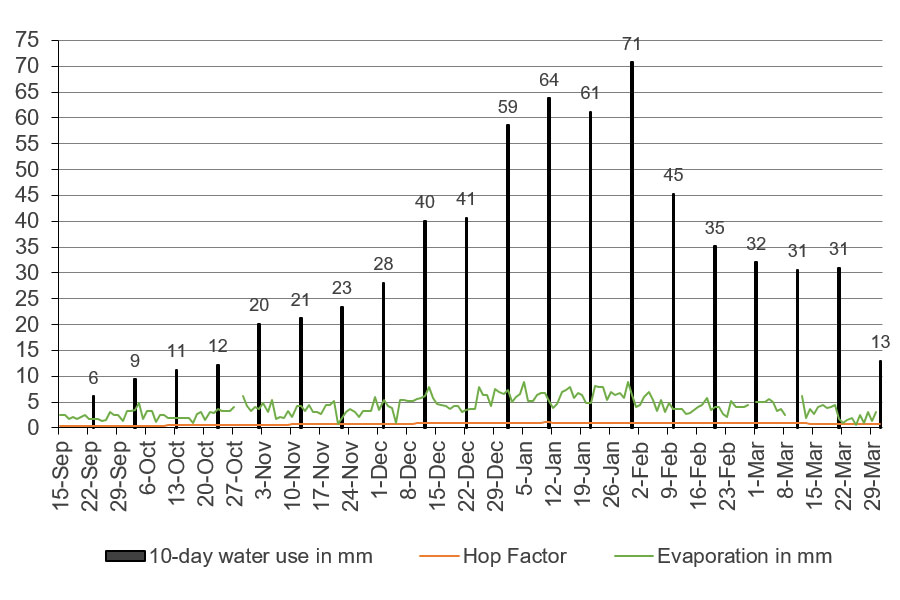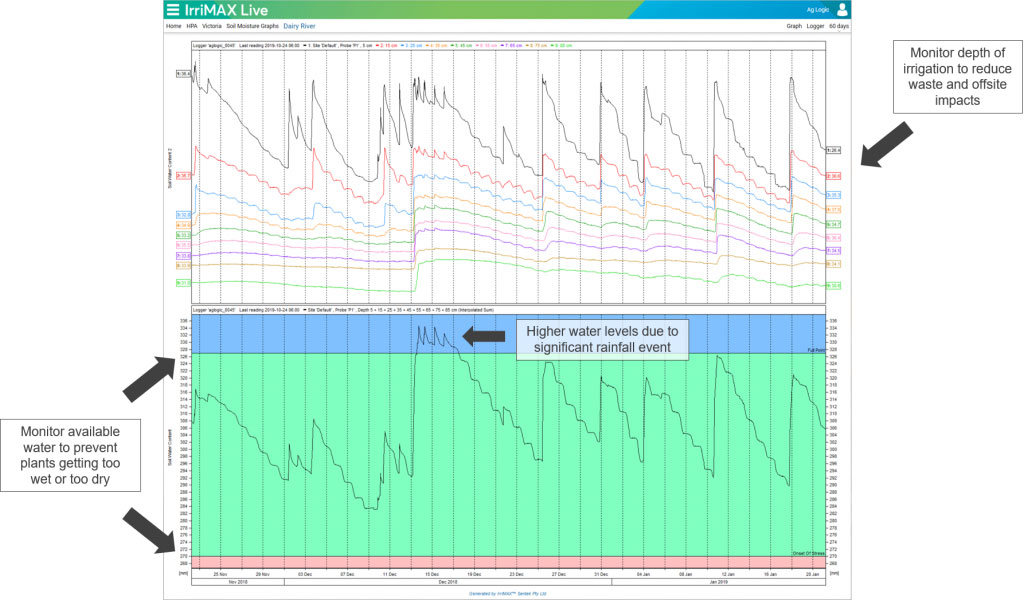
The efficient and effective use of water is one piece of our sustainability strategy. Although our farms have been established upon land where the soil is rich and the water supply is abundant, we value the natural resources that ensure our success, and strive to manage them responsibly. This includes the use of a cloud-based irrigation system that continuously monitors soil moisture levels to ensure we only use as much water as we need to deliver high quality hops to brewers, while conserving the rest to support the local flora, fauna and recreation.
In order to produce one of the highest yielding hop crops in the world while conserving as much water as possible, we need to continually assess our net irrigation needs. This process involves calculating the maximum evapotranspiration (ie. total losses due to transpiration and evaporation from the soil) using climate data and our knowledge of the crop needs during critical growth stages. By following evaporation rates from the previous week versus historical climate data, the weather forecast, the current soil moisture status, the age and growth stage of a crop, we can accurately predict our irrigation needs for the week ahead throughout the growing season.
We use a predictive model that utilises an array of Australian Bureau of Meterology (BoM) data relating to our farms in order to forecast the evapotranspiration for the week ahead. Knowing the forecast rate of water loss from our fields, we are well placed to efficiently and effectively manage the resources available to us.
The amount of water our crop needs is dependent on the age of the crop and the growth stage it is in. Young crops typically need less water than more established crops, while both will need increasingly more water as they move through the critical growth stages. This is known as ‘crop factor’. We multiply the evaporation rate by the ‘crop factor’ to accurately schedule irrigation for the week ahead.
Evapotranspiration of the growing season in 2019

We also have in-field soil moisture monitoring probes on our farms that take a reading every ten minutes in 10cm intervals from 5cm to 85cm in depth. These readings are logged to a cloud-based server that our Farm Managers and Agronomists can view remotely, in real time over the course of the growing season.
Using our in-field soil moisture monitoring probes, we can also track the influence of irrigation, variance in plant uptake and rainfall. This allows us to apply the optimum amount of irrigation on a field-by-field basis. Irrigation optimisation is particularly important as too much water causes our crop to become water-logged resulting in overall yield loss, while not enough water causes our crop to go into shock resulting in photosynthesis shutting down and overall yield loss.
Real time readings from cloud-based soil moisture monitoring and irrigation optimisation technology in 2019

We have been using soil moisture monitoring and irrigation optimisation technology for nearly 20 years, and we will continue to invest, develop and refine our processes to ensure we keep managing the natural resources we use responsibly.






